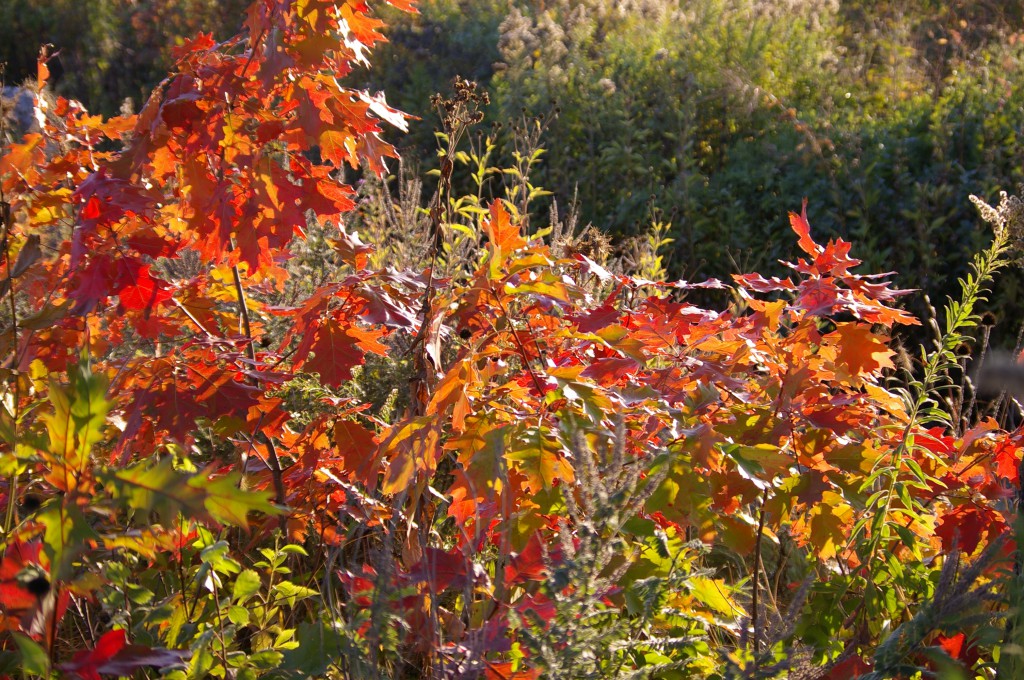
Here in Wisconsin, the leaves are starting to turn the characteristic reds, oranges and yellows of autumn. This is one of my favorite times of the year (not only because of Mother Nature’s impressive displays but also because we are nearing that magical time between the last lawn mowing and the first snow shoveling). This is the time of year that I try to take in as much color as I can before everything is covered in a blanket of white.
As I stroll around, enjoying the view, I think about the chemical changes within the leaves that cause such vibrant colors. I can’t help myself; I am a scientist.
To understand why leaves change color, you have to know a little about photosynthesis, the chemical process through which plants and some other organisms convert light energy to chemical energy. (Bear with me for a few sentences. I promise to make this quick refresher as quick and painless as possible.) Pigments within a leaf absorb light in such a way that excites electrons to a higher energy state. These energized electrons are directed into an electron transport chain that results in the synthesis of ATP and NAPDH. These molecules act as energy sources for carbon fixation, the process of combining carbon dioxide in the air with water to form carbohydrates (sugars) and O2. Chlorophyll, which absorbs red and blue light and gives leaves their characteristic green color, is probably the best-known of these energy-gathering pigments. Plants use other pigments to capture light energy that chlorophyll misses. For example, carotene, a yellow carotenoid pigment also found in daffodils, corn and bananas, absorbs blue and blue-green light. Flavonoids absorb blue, blue-green and green light and include anthocyanin pigments, which give color to ripe cranberries, grapes, blueberries and cherries. These other pigments capture and funnel energy to chlorophyll for use in photosynthesis. It is these other pigments that give autumn leaves their bright hues.
Certain pigments are synthesized all summer long but are masked by chlorophyll; these include the bright yellow pigments carotene and xanthophyll and red pigment lycopene. Chlorophyll is relatively unstable in sunlight and must be continuously synthesized by plants. However, once temperatures begin to drop and days shorten, plants prepare for winter by restricting the flow of nutrients to and from the leaves. Chlorophyll production declines and the green color fades, allowing existing pigments to show through. At about this same time, synthesis of some pigments is increasing. In some plants, the increasing sugar concentration within a leaf stimulates anthocyanin synthesis, giving the leaf a rich red, blue or purple color.
The level and ratio of these pigments is often species-specific. Oak leaves are often red or, in the absence of pigments, brown due to tannins. Birch and poplar trees are characteristically yellow. Certain subspecies of maple trees are loved for their bright displays of scarlet.
Color and color intensity are affected by environment cues. Dry conditions will increase the sugar concentration and anthocyanin levels within a leaf. Low temperatures and bright sunlight also stimulate anthocyanin production. Hence, dry sunny days followed by cool dry nights produce the brightest autumn colors. Finally, pH plays a role. If you’ve ever had a classroom project in which you used anthocyanins in red cabbage juice as a pH indicator, you have first-hand experience with this phenomenon. Anthocyanins are red at acidic pH (pH 1–3), purple at pH < 7 and deep blue at pH < 8. This helps explain why the same species of tree can vary significantly in color from one region to another.
Next time you’re out for a walk, be sure to enjoy your local colors before they’re gone. Like so many good things in life, these seasonal displays are fleeting.

To determine the best times to view autumn colors in the U.S., visit the Fall Color Hotline, which is maintained by the U.S. Forest Service at: http://www.fs.fed.us/news/fallcolors/ .
thanks for posting this
Thanks! This was a very nice blog. I’ll be enjoying the colors even more knowing the science behind the colors.